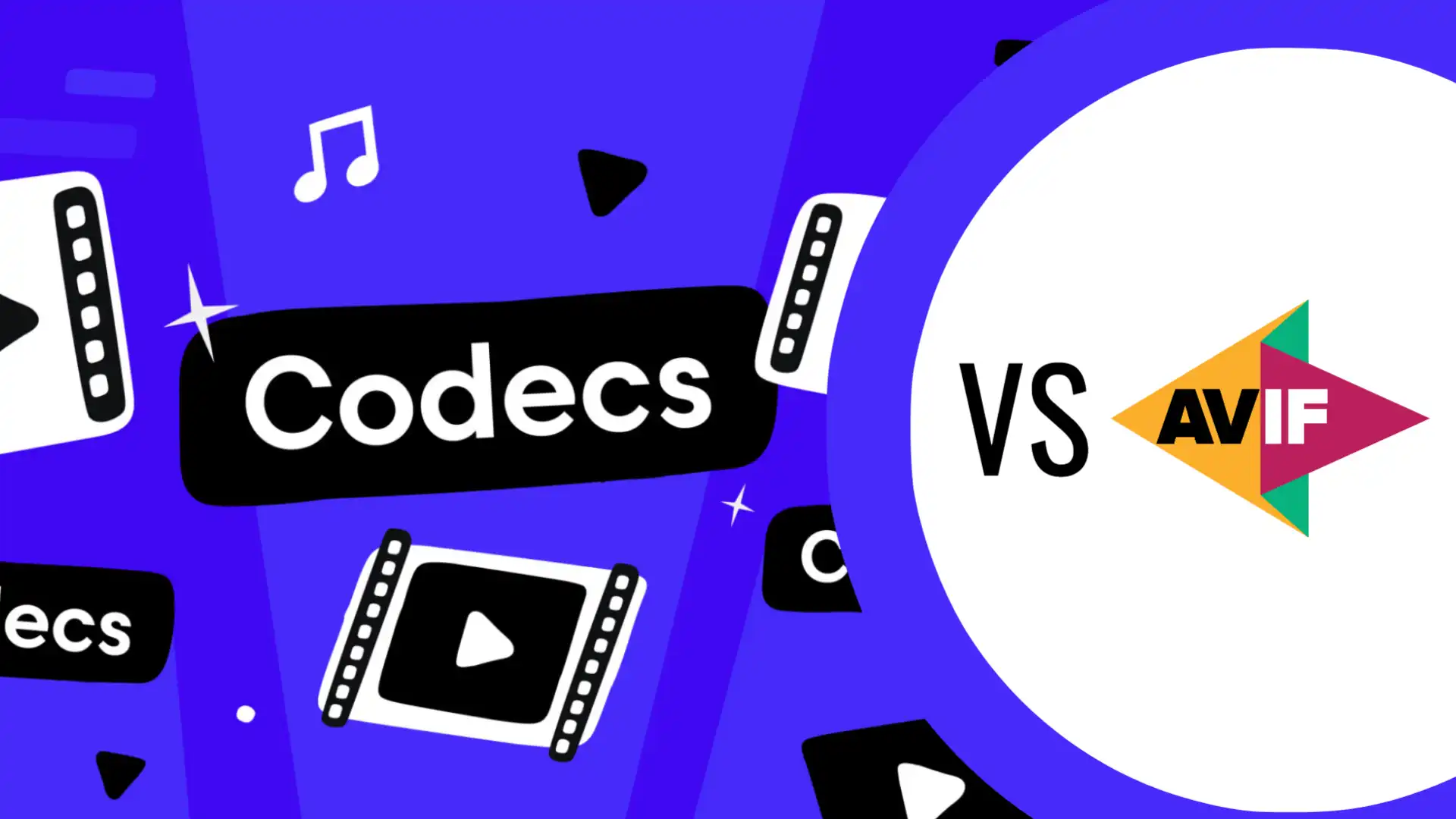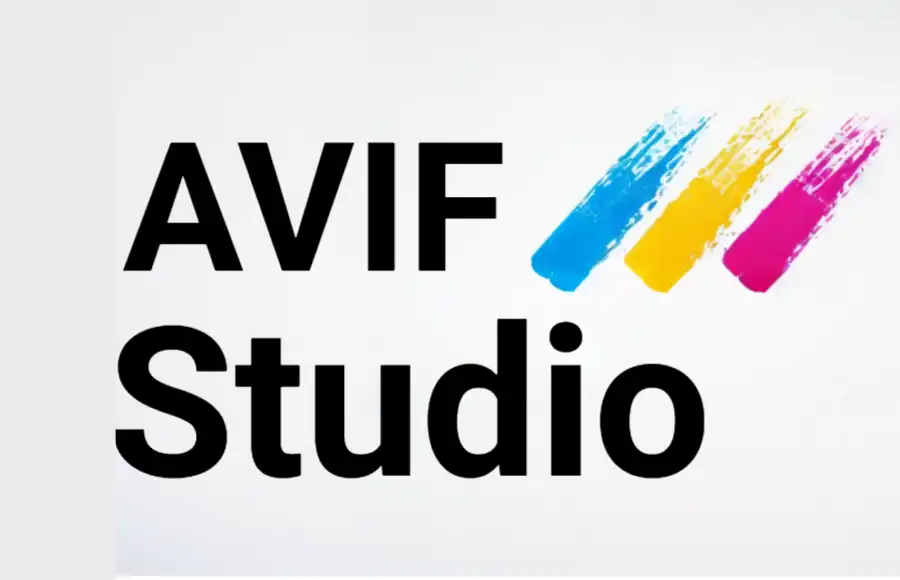AVIF a better codec than Other codecs ?

In the ever-evolving landscape of digital media, the quest for optimal image compression continues to drive innovation. AVIF, short for AV1 Image File Format, has emerged as a promising contender in this arena, touted for its potential to surpass traditional codecs in terms of efficiency and quality. But is AVIF truly better than other codecs? Let's delve into the intricacies to find out.
At the heart of AVIF's allure lies its foundation on the AV1 video codec, a product of the Alliance for Open Media (AOM). This pedigree immediately sets AVIF apart, as the AV1 codec is renowned for its groundbreaking compression techniques. Unlike older codecs like JPEG, which rely on outdated algorithms such as discrete cosine transform (DCT), AV1 leverages more sophisticated methods like intra-frame and inter-frame prediction, entropy coding, and adaptive quantization. These advancements enable AVIF to achieve superior compression efficiency, resulting in smaller file sizes without compromising image quality.
Comparing AVIF to other popular codecs like JPEG, PNG, and WebP unveils its strengths. JPEG, while widely adopted, struggles with artifacts and loss of quality, especially at higher compression levels. PNG, known for its lossless compression, often yields larger file sizes, making it less suitable for web content delivery. WebP, Google's modern alternative to JPEG and PNG, offers better compression efficiency but may fall short in certain aspects compared to AVIF. AVIF's ability to produce smaller file sizes with higher fidelity positions it as a compelling choice for a wide range of applications, from web design and digital art to professional photography and e-commerce.
Furthermore, AVIF's support for advanced features like HDR (High Dynamic Range) imaging and wide color gamuts enhances its appeal, especially in the context of emerging display technologies. As HDR becomes increasingly prevalent in consumer electronics, AVIF's ability to encode HDR content accurately ensures compatibility and future-proofing for creators and consumers alike. This forward-thinking approach cements AVIF's position as a codec poised to shape the future of digital media.
Despite its impressive capabilities, AVIF is not without its challenges. Adoption hurdles, compatibility issues, and computational complexity may pose obstacles for widespread integration. However, ongoing efforts by browser vendors, software developers, and industry stakeholders to support and optimize AVIF are steadily mitigating these concerns, paving the way for broader acceptance and adoption.
In conclusion, while AVIF may not be a panacea for all image compression needs, its advantages over traditional codecs are undeniable. By harnessing the power of the AV1 codec and embracing cutting-edge techniques, AVIF offers a compelling solution for creators seeking to balance compression efficiency with image quality. As support for AVIF continues to grow and its ecosystem matures, it is poised to redefine the standards of image compression, ushering in a new era of visual excellence in digital media.
Frequently Asked Questions
- How does AVIF leverage the AV1 codec to achieve superior compression compared to traditional codecs?
- What specific advantages does AVIF offer over widely used codecs like JPEG, PNG, and WebP?
- Can you explain how AVIF maintains image quality while achieving smaller file sizes compared to other codecs?
- What role does AVIF play in addressing common issues such as artifacts, loss of quality, and large file sizes associated with traditional codecs?
- How does AVIF's support for advanced features like HDR imaging and wide color gamuts contribute to its superiority over other codecs?
- What challenges and limitations does AVIF face in terms of adoption and integration into existing workflows?
- Are there any compatibility issues or considerations to be aware of when implementing AVIF compared to other codecs?
- Can you provide examples of practical applications where AVIF's advantages are most pronounced compared to other codecs?
- How do browser vendors and software developers contribute to the advancement and optimization of AVIF as a codec?
How does AVIF leverage the AV1 codec to achieve superior compression compared to traditional codecs?
AVIF leverages the AV1 codec's advanced compression techniques to achieve superior compression compared to traditional codecs. The AV1 codec incorporates state-of-the-art algorithms such as intra-frame and inter-frame prediction, adaptive quantization, and entropy coding, which are more efficient at reducing redundancy in image data compared to older codecs like JPEG and PNG.
By analyzing both spatial and temporal redundancies within images, AVIF can achieve higher compression ratios without sacrificing image quality. This is particularly evident in scenarios with complex imagery or high motion, where AVIF's predictive coding can accurately capture and represent visual information while minimizing file size. Additionally, AVIF supports both lossy and lossless compression modes, giving users flexibility in choosing the level of compression according to their specific requirements.
What specific advantages does AVIF offer over widely used codecs like JPEG, PNG, and WebP?
AVIF offers several specific advantages over widely used codecs like JPEG, PNG, and WebP. Firstly, AVIF typically achieves smaller file sizes while maintaining higher image quality compared to JPEG and PNG. This is due to AVIF's advanced compression techniques and support for a wider range of color spaces and bit depths, allowing for more efficient representation of image data.
Secondly, AVIF outperforms WebP in terms of compression efficiency and image quality, especially for high-resolution imagery and complex scenes. While WebP offers better compression than JPEG and PNG, AVIF generally surpasses it in terms of compression ratios and visual fidelity, making it a more compelling choice for a variety of applications.
Additionally, AVIF's support for advanced features like HDR imaging and wide color gamuts sets it apart from other codecs, making it a future-proof solution for emerging display technologies. This makes AVIF a versatile and forward-thinking choice for content creators and developers looking to deliver high-quality imagery across different devices and platforms.
Can you explain how AVIF maintains image quality while achieving smaller file sizes compared to other codecs?
AVIF maintains image quality while achieving smaller file sizes compared to other codecs through a combination of advanced compression techniques and support for a wide range of color spaces and bit depths. By leveraging the AV1 codec's compression algorithms, AVIF can analyze and exploit redundancies in image data more effectively than traditional codecs like JPEG and PNG.
Furthermore, AVIF's support for features like intra-frame and inter-frame prediction allows it to capture and represent visual information more accurately, even at higher compression levels. This results in smaller file sizes without perceptible loss in image quality, making AVIF an ideal choice for applications where both compression efficiency and visual fidelity are crucial.
What role does AVIF play in addressing common issues such as artifacts, loss of quality, and large file sizes associated with traditional codecs?
AVIF plays a significant role in addressing common issues such as artifacts, loss of quality, and large file sizes associated with traditional codecs by offering superior compression efficiency and advanced features. Unlike older codecs like JPEG and PNG, which may produce artifacts and suffer from loss of quality at higher compression levels, AVIF employs predictive coding and adaptive quantization techniques to minimize these issues.
Furthermore, AVIF's support for both lossy and lossless compression modes allows users to optimize image quality according to their specific requirements. This flexibility ensures that images encoded in AVIF retain their visual integrity across different compression levels, making it suitable for a wide range of applications, from web content delivery to professional photography.
How does AVIF's support for advanced features like HDR imaging and wide color gamuts contribute to its superiority over other codecs?
AVIF's support for advanced features like HDR imaging and wide color gamuts contributes to its superiority over other codecs by enabling more accurate representation of colors and dynamic range. Unlike some legacy formats that are limited to standard dynamic range (SDR) images and a narrow gamut of colors, AVIF allows for the encoding of high-fidelity HDR content with a broader range of luminance levels and color depths.
Additionally, AVIF's advanced compression techniques ensure that HDR images encoded in AVIF retain their visual fidelity and dynamic range, even at higher compression levels. This makes AVIF well-suited for applications where accurate reproduction of HDR content is critical, such as digital cinema, gaming, and virtual reality.
What challenges and limitations does AVIF face in terms of adoption and integration into existing workflows?
Despite its numerous advantages, AVIF faces several challenges and limitations in terms of adoption and integration into existing workflows. One challenge is the relatively limited support for AVIF in older or less commonly used software applications and platforms. While support for AVIF is growing, there may still be instances where users encounter compatibility issues or degraded performance when working with AVIF images.
Additionally, the encoding and decoding processes for AVIF images can be computationally intensive, especially for complex or high-resolution content. This could result in longer processing times and increased resource utilization compared to simpler codecs like JPEG. Furthermore, the adoption of AVIF may require updates to existing infrastructure and workflows, which could involve additional time and effort for migration.
Are there any compatibility issues or considerations to be aware of when implementing AVIF compared to other codecs?
There are several compatibility issues and considerations to be aware of when implementing AVIF compared to other codecs. Firstly, while major web browsers like Google Chrome, Mozilla Firefox, and Microsoft Edge have started adding support for AVIF, there may still be compatibility issues with older or less commonly used browsers.
Additionally, not all software applications and platforms support AVIF out of the box, which could pose challenges for users who rely on specific tools or workflows. Furthermore, the encoding and decoding processes for AVIF images may require more computational resources compared to other codecs, which could impact performance on devices with limited processing power.
Can you provide examples of practical applications where AVIF's advantages are most pronounced compared to other codecs?
There are several practical applications where AVIF's advantages are most pronounced compared to other codecs. One such application is web content delivery, where AVIF's superior compression efficiency and support for high-quality imagery contribute to faster load times and reduced bandwidth consumption. This is particularly advantageous for websites that rely on visual content, such as e-commerce platforms, digital art galleries, and photography portfolios.
Additionally, AVIF's support for advanced features like HDR imaging and wide color gamuts makes it an ideal choice for applications where color accuracy and fidelity are paramount, such as professional photography, graphic design, and digital imaging. Its ability to encode HDR content accurately ensures compatibility and future-proofing for creators and consumers alike.
How do browser vendors and software developers contribute to the advancement and optimization of AVIF as a codec?
Browser vendors and software developers play a crucial role in the advancement and optimization of AVIF as a codec by implementing support for AVIF in their products and contributing to the development of related technologies. Major web browsers like Google Chrome, Mozilla Firefox, and Microsoft Edge have already started adding support for AVIF, allowing users to view AVIF images directly within the browser without the need for plugins or extensions.
Furthermore, software developers are actively working on tools and libraries for encoding and decoding AVIF images, making it easier for content creators and developers to integrate AVIF into their workflows. This includes open-source projects like libavif and AVIFQuickLook, which provide APIs and utilities for working with AVIF images across different platforms and programming languages.
